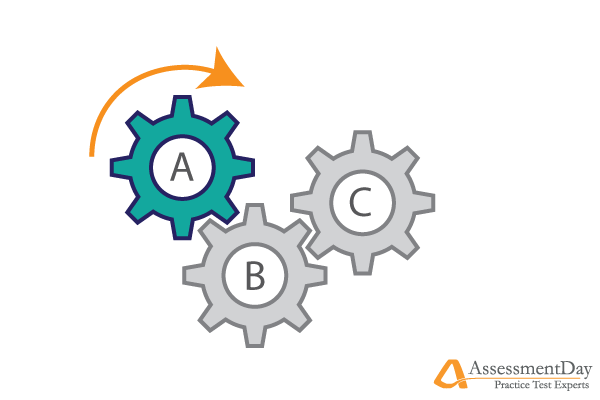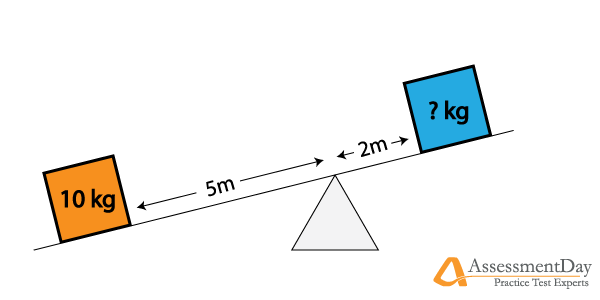Mechanical Reasoning Tests
Your essential mechanical reasoning study guide - complete with in-depth breakdown of the different tests and a free practice test.



Page contents:
Jump to:Updated:
What are mechanical reasoning tests?
Mechanical reasoning tests assess your understanding and predictions of stationary and moving objects. Knowing how objects interact with each other and basic principles, such as gravity, mass are important in our daily lives, but even more so in particular jobs, most notably, engineering, but also the emergency services or the military.
Mechanical reasoning tests will often ask questions on moving systems, which typically involve; pulleys, levers, springs, tools, gears, cogs, machinery, but also static mechanics, such as balance, equilibrium, mass. Some tests may even ask questions based on currents and the flow of electricity, a lot of this knowledge will have to be learnt and isn't as intuitive as the mechanical questions which we are familiar with.
What do mechanical reasoning tests consist of and when are they applied?
Mechanical Reasoning tests will cover the main mechanical topics and may also include some electricity questions.
Here is a list of the topic questions you could face:
- Force and Movement
- Gears and Pulleys
- Velocity and Gravity
- Springs and Levers
- Energy (Kinetic, potential etc.)
- Electricity (Circuits and magnetism etc.)
In a mechanical reasoning test, each question you are presented with an image that depicts a simple object or situation, often with labels or arrows to indicate motion or direction. You are then asked a question which requires the information in the image to answer, such as which object is the most stable, or which object will travel faster.
The questions in mechanical reasoning tests will sometimes be adapted to the sector that's hiring, for example, for a fire-fighting role questions might be put into the context in which a firefighter might find themselves in.
Example Mechanical Reasoning Questions
Here we will go through two simple questions that will test some of your basic mechanical reasoning skills.
These question types are very popular and it's highly likely you will have to face a question addressing this theory in your mechanical reasoning tests.
Question 1
The following image depicts a question you may be asked concerning gears and pulleys. Here you would be asked:
'If cog A rotates in the direction depicted by the arrow, which direction will cog C move?'
The options for this question could be 'clockwise', 'anti-clockwise' or 'no direction', the answer will be displayed below the image.

The correct answer to this question would have been clockwise. Cog A would rotate clockwise causing Cog B to be turned anti-clockwise, which in turn would cause Cog C to be turned clockwise.
Question 2
This question addresses force and balance. Here you would be asked:
'What weight does the blue box have to be in order for the seesaw to be in equilibrium (balanced)?'
For this question you must understand the conditions needed to create a system of static equilibrium.

The correct answer to this question would have been 25 kg. In order for the seesaw to be in equilibrium, the net force must equal zero. Moment of a force = force x distance to pivot. Therefore, the moment of a force on the left side of the seesaw is 10 kg x 5 = 50. The right side must equal 50 for the seesaw to be balanced, therefore 50 divided by 2 (2 meters distance from pivot) = 25.
Take a free mechanical reasoning test
Free Mechanical Reasoning Test
FreeFree sample mechanical reasoning test containing 10 questions. You have 8 minutes to correctly answer as many as you can.
Did You Know
Candidates will often be required to answer questions based on a variety of topics, such as: Electrical circuits, Pulleys, Levers, Springs, Tools, Gears and Maps. It is important that you have a good knowledge of each of these areas, and the basic principles within them; although it is highly unlikely that candidates would have reached this stage of recruitment without any knowledge or experience of these.
The most common mechanical reasoning tests:
Bennett Test of Mechanical Comprehension: Measures understanding of physical forces on mechanics. It is commonly employed when recruiting for mechanical engineering roles.
Wiesen Test of Mechanical Aptitude: Often used when selecting candidates who will go on to repair and work with machinery or tools.
Barron's Test of Mechanical Aptitude: Typically used in selection procedures for the military, this test assesses candidates based on subjects related to the abilities a person would need to succeed in this occupation.
Stenquist Test of Mechanical Aptitude: Slightly different to the other mechanical reasoning tests, as specialized knowledge isn't necessary, instead, you are asked to choose one from four images which best matches what you were just shown.
Advice on tackling mechanical reasoning tests
Like all aptitude tests, mechanical reasoning tests are seen to offer valuable predictions of job productivity. It goes without saying that practice will help you to answer mechanical reasoning questions faster and with more accuracy.
The tests are timed, so being able to quickly answer the question is beneficial, although these types of tests generally have a 1-5% full completion rate, so getting to the end of the assessment is not as important as the amount of correct answers you provide.
Most questions will be about force and movement, so be sure to understand this topic well.
If you are asked a question and you can't work out, for example, what effects a short or a long lever would have on the force needed to pull it, try to imagine it in the extremes; the difference between a very short lever and a very long lever. This might help you understand better than imaging a difference that is less extreme.
Mechanical reasoning tests are only used for roles in which this knowledge and these skills are useful, so if you're struggling to complete these tests, it could be that you will struggle in the applied job role. Other tests will be used for applying to jobs in completely different sectors.
Did You Know
The tests are timed, so being able to quickly answer the question is beneficial, although these types of tests generally have a 1-5% full completion rate, so getting to the end of the assessment is not as important as the amount of correct answers you provide.